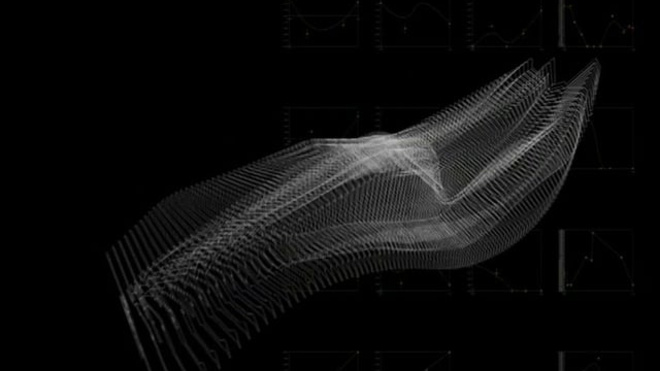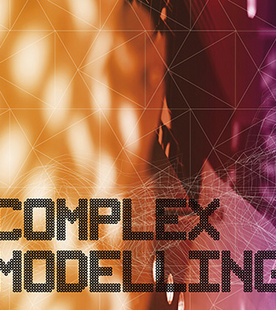Parametric Wood
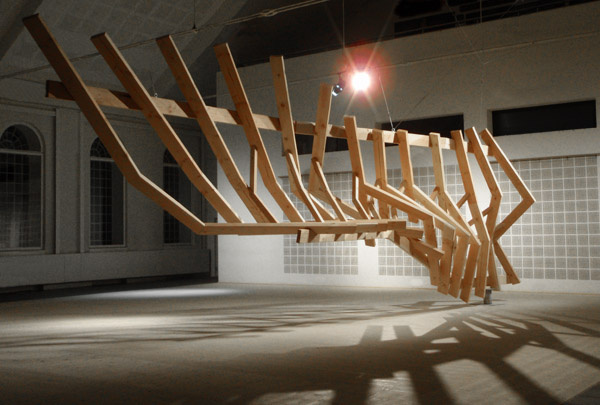
A research project by CITA in collaboration with a range of industrial partners (see full list below).
The versatility of wood constructions and traditional wood joints for the production of non standard elements was in focus of this design based research. Herein we established a seamless process from digital design to fabrication. A first research phase centered on the development of a robust parametric model and a generic design language a later explored the possibilities to construct complex shaped geometries with self registering joints on modern wood crafting machines. The research was carried out as collaboration with industrial partners.
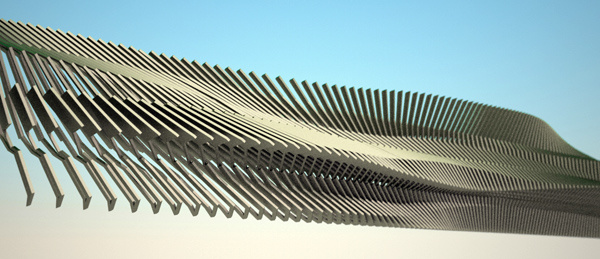
Parametric Control
The precise control of the geometry was the key to the projects. Computation allowed not only the intuitive shift of the model, but provided as well solutions for control and detailing. The link to engineering tools, and spreadsheets, gave instant feedback on stability, point of gravity, masses. Algorithms examined and solved geometry in order to fit to the requirements of wood construction and material. These parameters where embedded into the design system and allowed to use the full potential of technology for the design.

Phase 1 - Design Probes
The project was inspired by an ongoing building project and took its point of departure in the question of generating changing transparencies and patterns with a series of kinked and bifurcating timber beams.
The initial parametric model consisted of only a few determining parameters, controlling different densities, heights, internal spaces and branching. The design possibilities within these set of parameters was extensively tested and was further refined in the design process.

The parametric model itself consisted of three nested interacting levels with individual sets of parameters:
(1) Basic layout of rails and distribution of beams, (2)Beam structure (represented by mid axis) and (3) solid shape.
The embedding of fabrication information allowed a direct link to production at every stage of design. Several scaled models secured the success of these methods. The parametric tool allowed integrating tectonic, material, fabrication and aesthetic considerations.
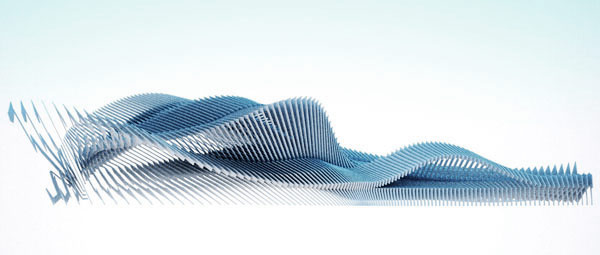
Phase 2 - Prototype
In close cooperation with wood construction software- and machine industry strategies and custom tools where developed. These where integrated in the data stream from design to production. This was demonstrated by a 1:1 wood-structure that showcased the potential of digital wood fabrication.
Test on the fabrication machinery enabled us to find out the exact limits of the production machinery and challenge this with our design that included several layers of different wood connection types. Some of these joint in extrem angles at its limits. Where the parts were inherently complex the production of them took solely 4 hours the assembly was done in less than a working day.
The outcome showed a versatile, fast and intelligent way of design and making, in which material, performance and fabrication parameters are interconnected. The realization of radical structures is enabled by closeness between craftsmanship and design.
The demonstrator was shown in the DigitalPrcatice exhibition (Medahls Smedie, Copenhagen 2008) and in the 2008 EAAE exhibition as well in Copenhagen.
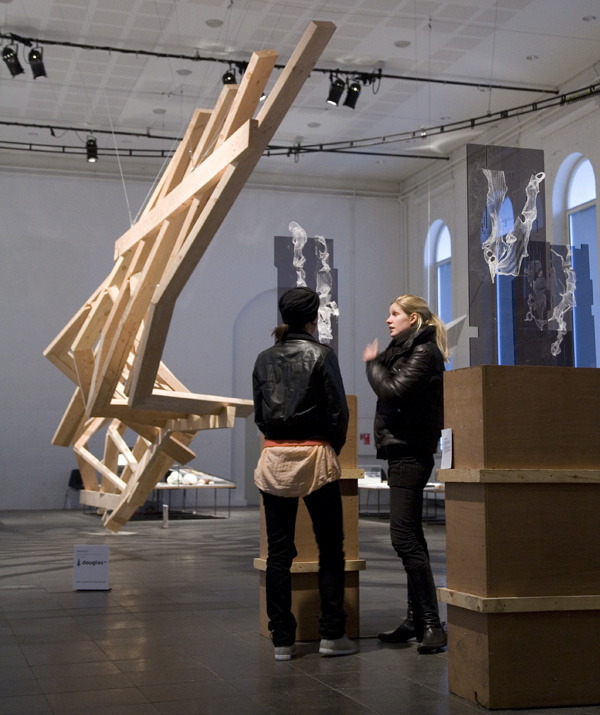

Monolithic Wood joints
Despite their obvious lack to transfer higher structural loads traditional wooden joints have several advantages that were examined within this research project: 1) Wooden joints can be specific to local geometrical and tectonic constraints. 2) As they are designed to be self registering traditional wooden joints introduced the idea of snap fit joints. These require a high level of planning and little tolerances in production but allow fast assembly. 3) The production on CNC machinery introduces the precision needed for a complete prefabrication. 4) Their monolithic setup minimizes problems due to shrink and dilatation, especially as the use of screws or bolts can be avoided.

An integrated collaborativ model
The project exemplifies how material and production properties can be included in customized parametric tools. In this project scripts became the information hub. They assembled and weighted the information gathered in the network of specialists, who showed a great openness and willingness to cooperate and give valuable information. The project is dependent on trust and will to cooperate across boundaries that are dominant in contemprorary building professions. Its success gives the necessary trust that the necessary links in complex building projects can be established in the future.
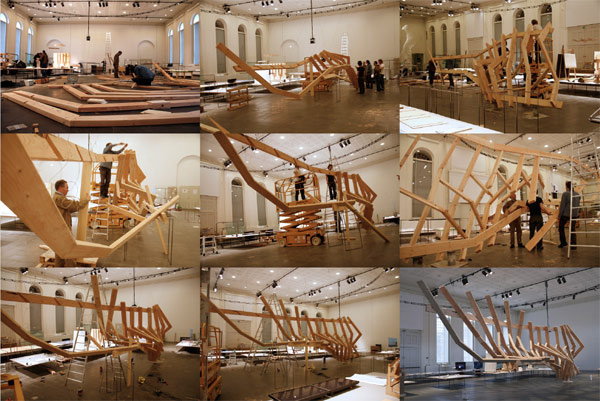
Publications
The project was published in several papers and articles . An overview and further information is given here or in the paper published in the frame of the Advances inm Architectural Geometry Conference (Vienna 2008).


